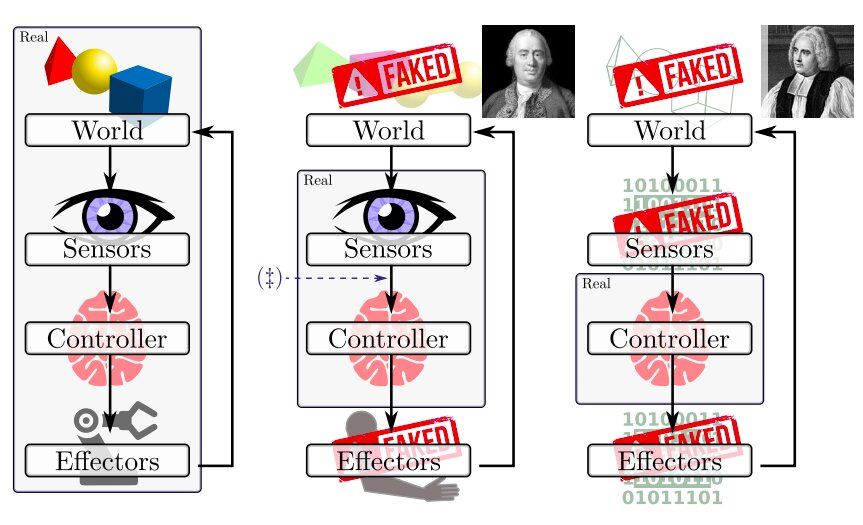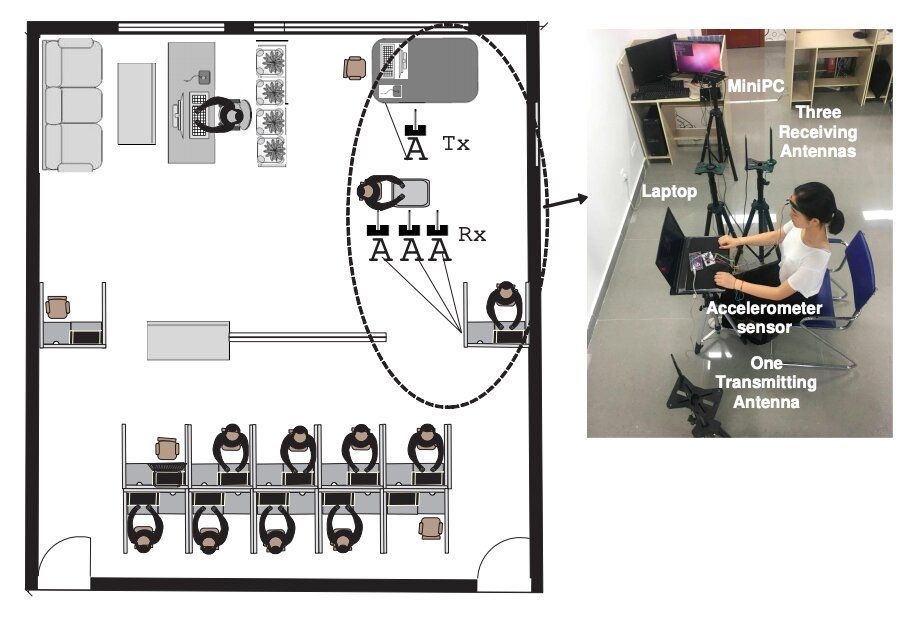Click on photo to start video.
Let’s take a look at the history of life extension and some of humanity’s attempts some promising, some hilariously wrong to cheat aging and death.

NASA is on a mission to go back to the moon by 2024 and use it as a “backyard” of experimentation, according to Lucien Junkin, chief engineer of the space exploration vehicle at NASA.
ABC toured NASA’s Johnson Space Center’s robotics design area: https://abcn.ws/2AleGSQ
Everything is moving. Our relative velocities.

Wave function represents the quantum state of an atom, including the position and movement states of the nucleus and electrons. For decades researchers have struggled to determine the exact wave function when analyzing a normal chemical molecule system, which has its nuclear position fixed and electrons spinning. Fixing wave function has proven problematic even with help from the Schrödinger equation.
Previous research in this field used a Slater-Jastrow Ansatz application of quantum Monte Carlo (QMC) methods, which takes a linear combination of Slater determinants and adds the Jastrow multiplicative term to capture the close-range correlations.
Now, a group of DeepMind researchers have brought QMC to a higher level with the Fermionic Neural Network — or Fermi Net — a neural network with more flexibility and higher accuracy. Fermi Net takes the electron information of the molecules or chemical systems as inputs and outputs their estimated wave functions, which can then be used to determine the energy states of the input chemical systems.

When ‘Oumuamua passed through our solar system two years ago, it set off a flurry of excitement in the astronomical community. Here was the first-ever interstellar object that be observed by human trackers, and the mysteries surrounding its true nature and composition led to some pretty interesting theories. There were even some proposals for a rapid mission that would be able to rendezvous with it.
And now that a second interstellar object—C/2019 Q4 (Borisov)—has been detected traveling through the solar system, similar proposals are being made. One of them comes from a group of scientists from the Initiative for Interstellar Studies (i4is) in the U.K. In a recent study, they assess the technical feasibility of sending a mission to this interstellar comet using existing technology, and found that there were a few options.
In many ways, C/2019 Q4 (Borisov) represents an opportunity to conduct the kinds of research that were not possible with ‘Oumuamua. When that mystery object was first observed, it had already made its closest pass to the sun, past Earth, and was on its way out of the solar system. Nevertheless, what we were able to learn about ‘Oumuamua led to the conclusion that it was an entirely new class of celestial object.

To evaluate the performance of robotics algorithms and controllers, researchers typically use software simulations or real physical robots. While these may appear as two distinct evaluation strategies, there is a whole other range of possibilities that combine elements of both.
In a recent study, researchers at Texas A&M University and the University of South Carolina have set out to examine evaluation and execution scenarios that lie at an intersection between simulations and real implementations. Their investigation, outlined in a paper pre-published on arXiv, specifically focuses on instances in which real robots perceive the world via their sensors, where the environment they sense could be seen as a mere illusion.
“We consider problems in which robots conspire to present a view of the world that differs from reality,” Dylan Shell and Jason O’Kane, the researchers who carried out the study, wrote in their paper. “The inquiry is motivated by the problem of validating robot behavior physically despite there being a discrepancy between the robots we have at hand and those we wish to study, or the environment for testing that is available versus that which is desired, or other potential mismatches in this vein.”

Wi-Fi 6 certification is here. On Monday, an announcement from the Wi-Fi Alliance datelined Austin, Texas said the Wi-Fi CERTIFIED 6 certification program from Wi-Fi Alliance was now available.
Edgar Figueroa, president and CEO, Wi-Fi Alliance, said, “Wi-Fi CERTIFIED 6 will deliver improvements in connectivity, including in high density locations and IoT environments.”
(Standards for Wi-Fi are established by the Institute of Electrical and Electronic Engineers, and devices are certified for these new standards by the Wi-Fi Alliance, said Lauren Goode in Wired.)

Researchers at Hefei University of Technology in China and various universities in Japan have recently developed a unique emotion sensing system that can recognize people’s emotions based on their body gestures. They presented this new AI- powered system, called EmoSense, in a paper pre-published on arXiv.
“In our daily life, we can clearly realize that body gestures contain rich mood expressions for emotion recognition,” Yantong Wang, one of the researchers who carried out the study, told TechXplore. “Meanwhile, we can also find out that human body gestures affect wireless signals via shadowing and multi-path effects when we use antennas to detect behavior. Such signal effects usually form unique patterns or fingerprints in the temporal-frequency domain for different gestures.”
Wang and his colleagues observed that human body gestures can affect wireless signals, producing characteristic patterns that could be used for emotion recognition. This inspired them to develop a system that can identify these patterns, recognizing people’s emotions based on their physical movements.
Americans are headed down to get this combination and taking it themselves…
https://www.alternativehealthscience.com/exposed-1001-cancer…le-cancer/
Lifeb.
Officials have issued an orange alert for one of South America’s most active volcanoes.
Scientists fear that Villarrica in southern Chile is preparing for a powerful eruption.
The military is reportedly putting together plans to evacuate thousands of people living nearby.
Report by Jeremy Barnes.